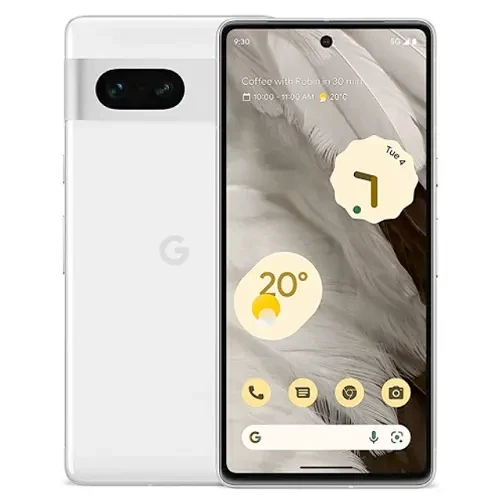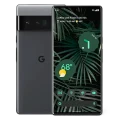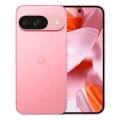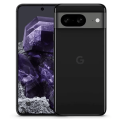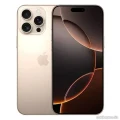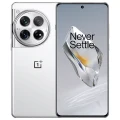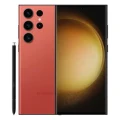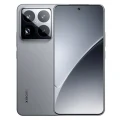Google Pixel 7
SPECS SCORE
Google Pixel 7 Review: The Flagship Experience Refined
The Google Pixel 7 follows the tradition of Google’s premium Pixel lineup, blending the company’s signature clean Android experience with cutting-edge hardware and impressive AI-powered features. Here’s a deep dive into what makes this phone stand out in an increasingly competitive smartphone market.
Design and Build Quality
The Pixel 7 carries forward the familiar design language of its predecessor, the Pixel 6, but with subtle refinements. The iconic camera bar is still present, now wrapped in a sleek aluminum frame, giving the device a more polished and unified look. With a glass back (protected by Gorilla Glass Victus) and an aluminum frame, the phone feels premium in hand while maintaining a reasonable weight of 197 grams.
Available in Obsidian, Snow, and Lemongrass, the Pixel 7 offers a variety of color options to suit different tastes. The overall design feels modern, with an emphasis on minimalism, while the IP68 water and dust resistance rating ensures durability.
Display
The Pixel 7 sports a 6.3-inch OLED display with a resolution of 2400 x 1080 pixels (FHD+), delivering vibrant colors and sharp details. With support for HDR10+ and a peak brightness of 1400 nits, the screen performs well even in bright outdoor conditions. The 90Hz refresh rate might seem less impressive compared to competitors with 120Hz displays, but it still provides a smooth and responsive user experience for most tasks, including scrolling and gaming.
Google has always excelled in tuning its displays, and the Pixel 7 is no exception. The colors are accurate, with deep blacks and high contrast, making it perfect for media consumption.
Performance and Software
At the heart of the Pixel 7 is Google’s Tensor G2 chip, the second iteration of Google’s custom silicon. Paired with 8GB of RAM, the phone handles multitasking, gaming, and daily operations with ease. While it may not outperform the latest Snapdragon or Apple’s A-series chips in raw benchmarks, the Tensor G2 is optimized for AI and machine learning tasks, which are core to many of the Pixel 7’s standout features.
One of the biggest draws of the Pixel series is its software. The Pixel 7 runs Android 13 with a clean, bloatware-free interface. Google’s version of Android is minimalistic, smooth, and intuitive, with Pixel-exclusive features like Call Screen, Hold for Me, and Now Playing, all powered by Google’s advanced AI. Plus, Pixel devices are guaranteed timely updates for three years of OS upgrades and five years of security patches.
Camera Performance
The Pixel lineup has long been renowned for its photography prowess, and the Pixel 7 continues this tradition. It features a 50MP primary sensor paired with a 12MP ultra-wide lens. While the hardware hasn’t seen significant changes, Google’s real advantage lies in its computational photography.
- Main Camera: The 50MP sensor delivers exceptional images with vibrant colors, great dynamic range, and impressive detail. Google’s HDR+ processing ensures that even in challenging lighting conditions, the photos come out looking fantastic.
- Ultra-Wide Camera: The 12MP ultra-wide lens performs well, especially in well-lit environments, capturing a broad field of view without too much distortion. Night mode is available on this lens as well, which produces solid low-light shots.
- Selfie Camera: The 10.8MP front-facing camera is capable of capturing sharp selfies with good skin tone reproduction. It also supports 4K video recording, a rare feature in front cameras.
- Video Recording: The Pixel 7 supports 4K video at 60fps on both the front and rear cameras. With the help of Tensor G2’s AI capabilities, the Cinematic Blur mode mimics the portrait video effect, giving videos a more professional look.
Battery Life
The Pixel 7 comes with a 4,355mAh battery, which is slightly smaller than the Pixel 6’s. However, thanks to the more efficient Tensor G2 chip and software optimizations, the battery life is solid, offering a full day of moderate use. With features like Extreme Battery Saver, the Pixel 7 can stretch to two days of use if needed.
The device supports 30W fast charging, though Google does not include a charger in the box. Wireless charging and reverse wireless charging are also available, making it a versatile option for users who rely on multiple wireless accessories.
Connectivity and Extras
The Pixel 7 is future-proof with 5G connectivity, supporting both Sub-6 and mmWave bands, depending on the region. The in-display fingerprint sensor is fast and reliable, a notable improvement over the Pixel 6. There’s also support for face unlock, although it’s software-based and not as secure as hardware-driven solutions like Apple’s Face ID.
Final Verdict
The Google Pixel 7 refines the experience of its predecessor, offering a polished design, excellent camera capabilities, and smooth software, all while remaining more affordable than many flagship competitors. Its AI-powered features, clean Android experience, and Google’s commitment to software updates make it an excellent choice for users who prioritize software integration and photography over sheer hardware power.
However, if you’re seeking the highest refresh rates or the most powerful gaming experience, the Pixel 7 may fall short compared to other flagship devices. But for anyone who values a balanced, intelligent smartphone that excels in everyday tasks and photography, the Pixel 7 is hard to beat.
Pros:
- Outstanding camera performance with Google’s computational photography.
- Clean Android experience with regular updates.
- Sleek design with IP68 rating.
- AI-powered features that enhance usability.
Cons:
- 90Hz display refresh rate could feel dated to some.
- Slightly smaller battery than competitors.
- No charger in the box.
The Pixel 7 stands as a solid contender in the flagship space, offering a well-rounded experience for Android enthusiasts and everyday users alike.
Specification
General
| Device Type | Smartphone |
| Brand | |
| Model | Pixel 7 |
| Status | Available |
| Released | 13 October 2022 |
| Price | Unofficial Price BDT. 43,500 |
Hardware & Software
| Operating System | Android v13 |
| Chipset | Google Tensor G2 |
| CPU | Octa core (2.85 GHz, Dual core, Cortex X1 + 2.35 GHz, Dual core, Cortex A78 + 1.8 GHz, Quad core, Cortex A55)8 Cores |
| CPU Cores | 8 Cores |
| Architecture | 64 bit |
| Fabrication | 4 nm |
| GPU | Mali-G710 MP7 |
Display
| Display Type | AMOLED |
| Size | 6.3 inches, 96.7 cm2 |
| Resolution | 1080x2400 px (FHD+) |
| Aspect Ratio | 20:9 |
| Pixel Density | 418 ppi |
| Screen to Body Ratio | 84.13 % |
| Display Protection | Corning Gorilla Glass, Glass Victus |
| Bezel-less Display | Yes with punch-hole display |
| Touch Screen | Capacitive Touchscreen, Multi-touch |
| Brightness | 1400 nits |
| HDR 10 / HDR + support | HDR 10+ |
| Refresh Rate | 90 Hz |
| Notch | Punch-hole |
Main Camera
| Camera Setup | Dual |
| Resolution | 50 MP f/1.9, Wide Angle (82° field-of-view), Primary Camera, 12 MP f/2.2, Ultra-Wide Angle Camera8150 x 6150 Pixels |
| Autofocus | Laser autofocus |
| OIS | Yes |
| Flash | Dual LED Flash |
| Image Resolution | 8150 x 6150 Pixels |
| Settings | Exposure compensation, ISO control |
| Zoom | 8 x Digital Zoom |
| Shooting Modes | Continuous Shooting, High Dynamic Range mode (HDR) |
| Aperture | f/1.9 |
| Features | Auto Flash, Face detection, Touch to focus |
| Video Recording | 3840x2160, 1920x1080 |
| Video FPS | 30 fps |
Selfie Camera
| Camera Setup | Single |
| Resolution | 10.8 MP f/2.2, Ultra-Wide Angle, Primary Camera |
| Video Recording | 3840x2160, 1920x1080 |
| Video FPS | 30 fps |
| Aperture | f/2.2 |
| Features | Fixed Focus |
Design
| Height | 155.6 mm |
| Width | 73.2 mm |
| Thickness | 8.7 mm |
| Weight | 197 grams |
| Build | Back: Gorilla Glass |
| Colors | Obsidian, Lemongrass, Snow |
| Waterproof | Water resistant (up to 30 minutes in a depth of 1.5 meter), |
| IP Rating | IP68 |
| Ruggedness | Dust proof |
Battery
| Battery Type | Li-Ion (Lithium Ion) |
| Capacity | 4355 mAh |
| Wireless Charging | Yes |
| Quick Charging | Fast, 30W: 50 % in 30 minutes |
| Placement | Non-removable |
| USB Type-C | USB Type-C 3.2 |
Storage
| Internal Storage | 128 GB |
| Storage Type | UFS 3.1 |
| RAM (Memory) | 8 GBLPDDR5 |
| RAM Type | LPDDR5 |
| USB OTG Support | Yes |
Network & Connectivity
| Network | 2G, 3G, 4G, 5G |
| SIM Slot | Dual SIM, GSM+GSM |
| SIM Size | SIM1: Nano, SIM2: Nano |
| EDGE | |
| GPRS | |
| VoLTE | Yes |
| Speed | HSPA, LTE-A, 5G |
| WLAN | Wi-Fi 6 (802.11 a/b/g/n/ac/ax) 5GHz, MIMO |
| Bluetooth | v5.2 |
| GPS | Yes with A-GPS, Glonass |
| Wi-fi Hotspot | Yes |
| NFC | Yes |
| USB | Mass storage device, USB charging |
Sensors & security
| Light Sensor | Light sensor, Proximity sensor, Accelerometer, Barometer, Compass, Gyroscope |
| Fingerprint Sensor | Yes |
| Fingerprint Sensor Position | On-screen |
| Finger Sensor Type | Optical |
| Face Unlock | Yes |
Multimedia
| Loudspeaker | |
| Alert Types | Vibration, MP3, WAV ringtones |
| Audio Jack | USB Type-C |
More
| Made by | US |
| Features | Accelerometer, gyro, proximity, compass, barometer |
Reviews
Disclaimer Note
You can write your own disclaimer from APS Settings -> General -> Disclaimer Note.
